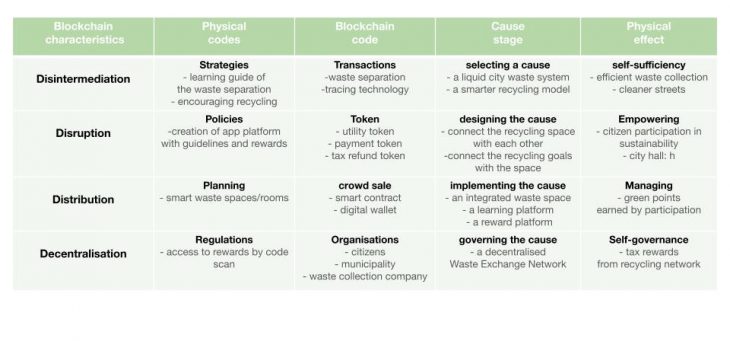Blockchain 4 Waste Management
Waste management systems should be improved and recycling habits should be promoted in order to ensure more sustainable cities. Blockchain helps its management as well as its public engagement.
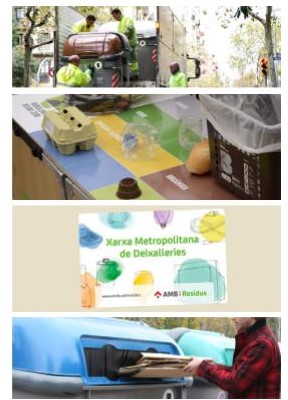
The Existing Recycling Space in Barcelona
– the recycling infrastructure
– the colors of the containers
– the waste separation guide
The Existing Recycling Goals
– the 3 R´s : reduce, reuse and recycle
– the “green points” in Barcelona
– the old furniture and junk collection
https://ajuntament.barcelona.cat/ecologiaurbana/en/services/the-city-works/maintenance-of-public-areas/waste-management
Recycling – The Back End
The recycling infrastructure
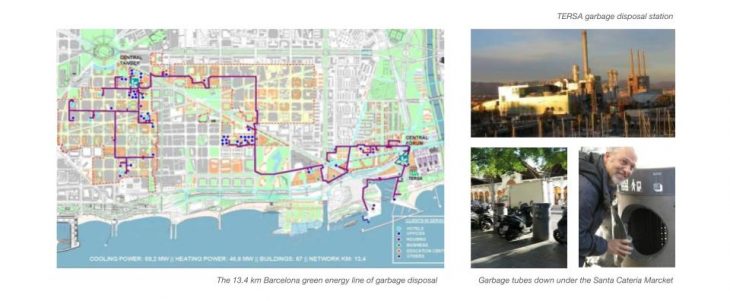
Recycling_the Front End
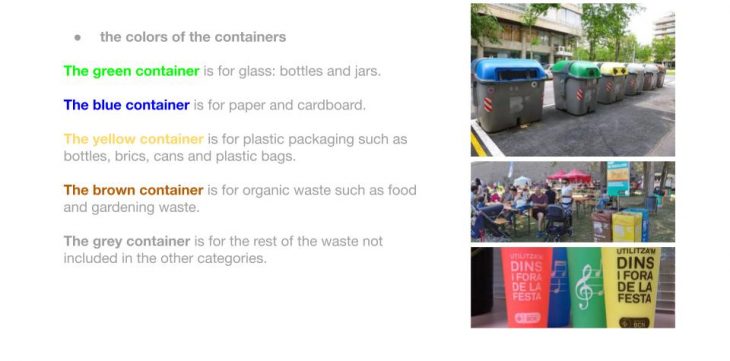
Recycling_ the Interface
The city hall waste separation guide.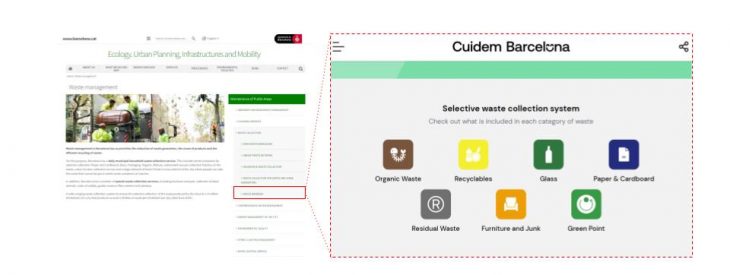
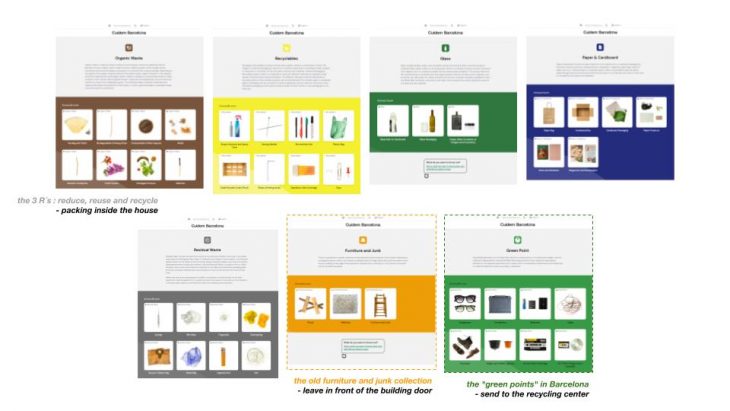
www.barcelona.cat/cuidembarcelona/en/reciclar
Barcelona_Waste Management
The Existing Recycling Space
– Not connected with each other
- the recycling infrastructure – Buried in the ground
- the colors of the containers – Stand on the street corner
- the waste separation guide – Hidden on the government web
The Existing Recycling Goals
– Not connected with Recycling Space
- the 3 R´s : reduce, reuse and recycle -Inside the house – packing inside the house
- the “green points” in Barcelona – leave in front of the building door
- the old furniture and junk collection – send to the recycling center
Smarter Recycling Model
We don’t just want a trash can, we need an integrated waste space which is the port of use for the future decentralized urban waste management infrastructure, distributed throughout the city and serving all citizens more efficiently and conveniently.
It is equivalent to some waste rooms located in buildings or on the street. It connects the urban recycling system efficiently and non-polluting through the garbage pipeline or trucks.
It is an urban waste exchange station, as well as a liquid urban garbage recycling learning platform and reward platform.
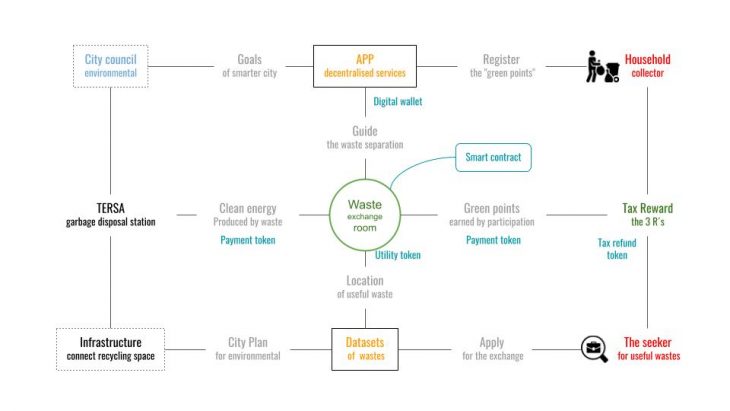
The Crypto Urbanomics Model
Blockchain 4 Waste Management is a project of IAAC, Institute for Advanced Architecture of Catalonia developed at Master in City & Technology in 2021/22 by students: Can Xu, Júlia Veiga and faculty: Lluisa Marsal
